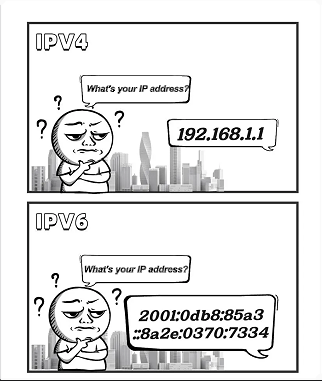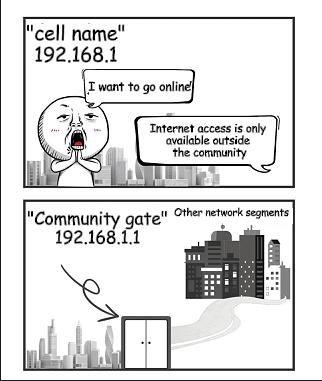Editor: Ms. Boya丨HCIE Expert-Level Instructor in Datacom. For more networking resources, follow the official account: Network Engineer Training Camp.

Hey guys!
Today, let’s talk about something hardcore, but I promise to keep it simple and avoid those jargon that puts you to sleep!
I’ll make sure you understand it right away!
IP address, subnet mask, and gateway—these three are essential. You can’t do without any of them!
01.IP Address
Imagine your neighborhood is called “192.168.1,” and your house number is “100.” Together, it becomes 192.168.1.100—that’s your IP address. Your neighbor’s address is 192.168.1.101, and the delivery guy (data packets) uses these numbers to send stuff to your house.

IPv4 is what we’re using now—it looks like 192.168.1.1. But we’re running out of addresses, so in the future, IPv6 will take over. It looks like alien code: 2001:0db8:85a3::8a2e:0370:7334 (don’t worry, you won’t need to use it just yet).
02.Subnet Mask·
The subnet mask 255.255.255.0 is like a strict boss who clearly marks the territory: “The first three numbers, 192.168.1, belong to our neighborhood, and the last number is yours to play around with!”

So, your address 192.168.1.100 and your neighbor’s 192.168.1.101 can chat directly. But if you want to reach 8.8.8.8 (Google’s DNS)? Your neighbor will glare and say, “Out! Go find the gateway!”
Here”s the key point: The subnet mask determines who’s part of the local gang and who’s an outsider—by performing a “bitwise AND operation” with the IP address (don’t worry about how it’s calculated, just remember the conclusion).
03.gateway
The gateway is the device’s IP address, for example, 192.168.1.1.
Want to browse Baidu or stream videos? Data packets have to go out through the gateway. No gateway? Then you’re stuck sharing files within the neighborhood walls—no connection to the Outside world, which is pretty much the same as being offline.

Fun fact: The gateway address is usually the 1st or 254th address in the neighborhood (network segment), like 192.168.1.1 or 192.168.1.254—purely because it’s easy to remember!
04.Pro tip: If the internet is down, check these three first!
1.IP Conflict: Two devices have the same house number? Neither can get online.
2.Wrong Subnet Mask: Security is confused, and data packets get lost in the neighborhood.
3.Incorrect Gateway: The gate is blocked, and data packets hit a wall, giving up.
Next time your network has issues, don’t rush to unplug the power! Right-click on network settings and check if the IP, subnet mask, or gateway is causing the problem (how to check? Press Win+R, type cmd, then enter ipconfig—just copy the values).
For more networking resources, follow the Facebook account&youtube account: Thinkmo Dumps


